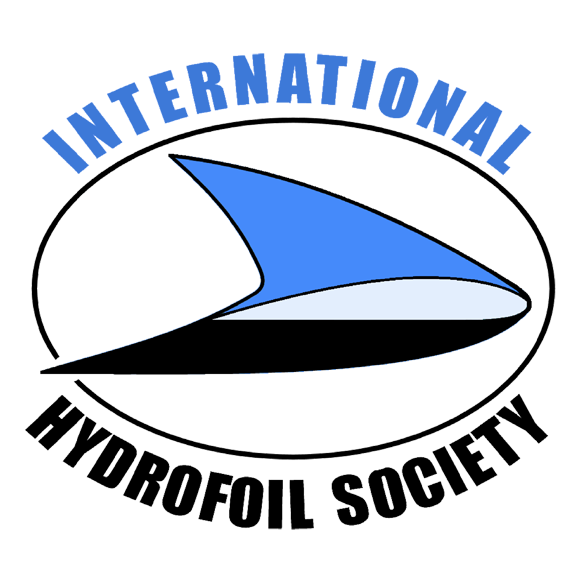2016 Awards
First Prize 2016
Subject:“A Fluid Structure Interaction Analysis of Vertical-Lift-Producing Daggerboards”
Authors: Casey Brown and Cody Stansky
Webb Institute – Glen Cove, New York
Faculty Adviser: Dr. Adrian Onas
Description:
This thesis analyses the steady state fluid structure interactions, FSI, of high-performance sailing hydrofoils. This was performed by evaluating an isotropic, CV-style sailing hydrofoil, similar to those being used on the AC 50’s, which will be competing in the 2017 Americas Cup. The FSI analysis was completed using the multi-physics simulation software, StarCCM+. The results from the FSI study are compared to a CFD analysis of the un-deformed foil, to determine the value of the FSI study. The deformed foil performance varied significantly enough at speeds of 30 knots and above to warrant a FSI study..
VERTICAL-LIFT-PRODUCING DAGGERBOARDS
A recent development in yacht design is the addition of a horizontal wing element on daggerboards to help produce vertical lift, while simultaneously providing the required side force. The advantage of this type of arrangement is the effective reduction in displacement, and subsequent reduction of resistance, because of the vertical lift produced by the daggerboard. This horizontal wing element can also significantly increase heave stability, even when a minimal amount of vertical lift is being generated.
~~~~~~~~~~~~~~~~~~~~~~~~~~~~~~~~~~~~~~~~~~~~~~
CLICK HERE FOR FIRST PLACE WINNING PAPER
Honorable Mention 2016
Subject:“On the Design and Manufacturing Choices to Obtain a Stable Canard Hydrofoil System for a Low Speed Solar Boat”
Authors: Elijah Thompson, Caleb Tanner, Caleb Jacobson, Kevin Harmon,
John Hopkins and Kyle Mary Cedarville University – Cedarville, Ohio
Faculty Adviser: Prof. Timothy Dewhurst
Description:
The purpose of this paper is to give an overview of the design decisions made in order to obtain a stable hydrofoil system for a solar powered boat. Cedarville University has won the Solar Splash Collegiate World Championship of Solar Boating nine times. Furthermore, Cedarville University was the top university in the Top Class of the 2012 DONG Energy Solar Challenge in the Netherlands (renamed DSC, Dutch Solar Challenge). In addition to this year’s Solar Splash, Cedarville University will be participating in the DSC with an overall objective to achieve first place. The DSC is a bi-annual week-long race known also as the World Cup for Solar Powered Boats that is open to both universities and companies. This race consists of long endurance portions and sprint portions.
Based upon previous competition winners, it was determined that hydrofoils are necessary to complete this objective. Hydrofoils provide a unique advantage by lifting the hull of the boat out of the water, and decreasing the drag above the takeoff speed. The following paper will describe the design of elliptical hydrofoils with the key design parameters being strength, drag, lift, and stability of the system. The creation and use of two complex Matlab codes for the design of hydrofoils will be touched upon. The front assembly and articulation design to manage height will be discussed. The combination of the lower gear unit of the drive train and the rear hydrofoil articulation in the same pod will be explored. Finally, the manufacturing methods of the strut and hydrofoils using a CNC machine will be explained.
~~~~~~~~~~~~~~~~~~~~~~~~~~~~~~~~~~~~~~~~~~~~~~
CLICK HERE FOR HONORABLE MENTION A
Honorable Mention 2016
Subject:“Parametric Optimization of a Kiteboarding Hydrofoil Using Computational Fluid Dynamics”
Author: Zachary Backas
Webb Institute – Glen Cove, New York
Faculty Adviser: Dr. Adrian Onas
Description:
Kitefoils are a form of hydrofoil that enables a kiteboarder to ride above the surface of the water on the lift of the appendage alone. Kitefoils are designed to produce a lift and moment to support and stabilize a rider across a wide range of operating speeds. The interconnectivity between the aspects of geometry that are significant to a kitefoil’s performance means that choosing the design parameters that maximize the foil’s efficiency is a complex challenge. As such, this hydrodynamic problem lends itself well to a parametric optimization procedure, in which the performance-critical aspects of the hydrofoil geometry are varied in search of an optima. In order to analyze design variants in the optimization process, a computational fluid dynamics analysis is employed and coupled to the process for automated geometry variant analysis. Ultimately, the performance of a base hydrofoil geometry may be improved through parametric optimization, though the effectiveness of the optimization is dependent upon sufficient parameter refinement and design space exploration.
~~~~~~~~~~~~~~~~~~~~~~~~~~~~~~~~~~~~~~~~~~~~~~
CLICK HERE FOR HONORABLE MENTION B
CLICK HERE FOR FIRST PLACE WINNING PAPER

